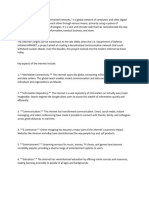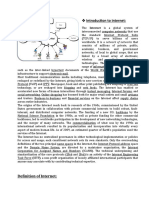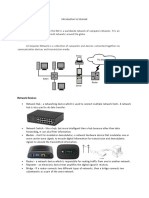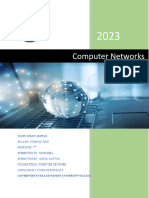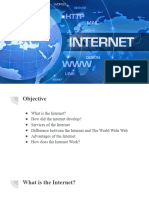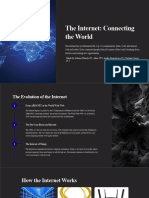0% found this document useful (0 votes)
11 views1 pageINTERNET
The internet is a global system of interconnected networks that facilitates communication and information exchange among devices worldwide. Originating from the ARPANET project in the 1960s, it uses the TCP/IP protocol for data transmission and includes the World Wide Web, which made the internet accessible to non-technical users. Access is provided by Internet Service Providers through various wired and wireless technologies.
Uploaded by
avviare6Copyright
© © All Rights Reserved
We take content rights seriously. If you suspect this is your content, claim it here.
Available Formats
Download as DOCX, PDF, TXT or read online on Scribd
0% found this document useful (0 votes)
11 views1 pageINTERNET
The internet is a global system of interconnected networks that facilitates communication and information exchange among devices worldwide. Originating from the ARPANET project in the 1960s, it uses the TCP/IP protocol for data transmission and includes the World Wide Web, which made the internet accessible to non-technical users. Access is provided by Internet Service Providers through various wired and wireless technologies.
Uploaded by
avviare6Copyright
© © All Rights Reserved
We take content rights seriously. If you suspect this is your content, claim it here.
Available Formats
Download as DOCX, PDF, TXT or read online on Scribd
/ 1



















